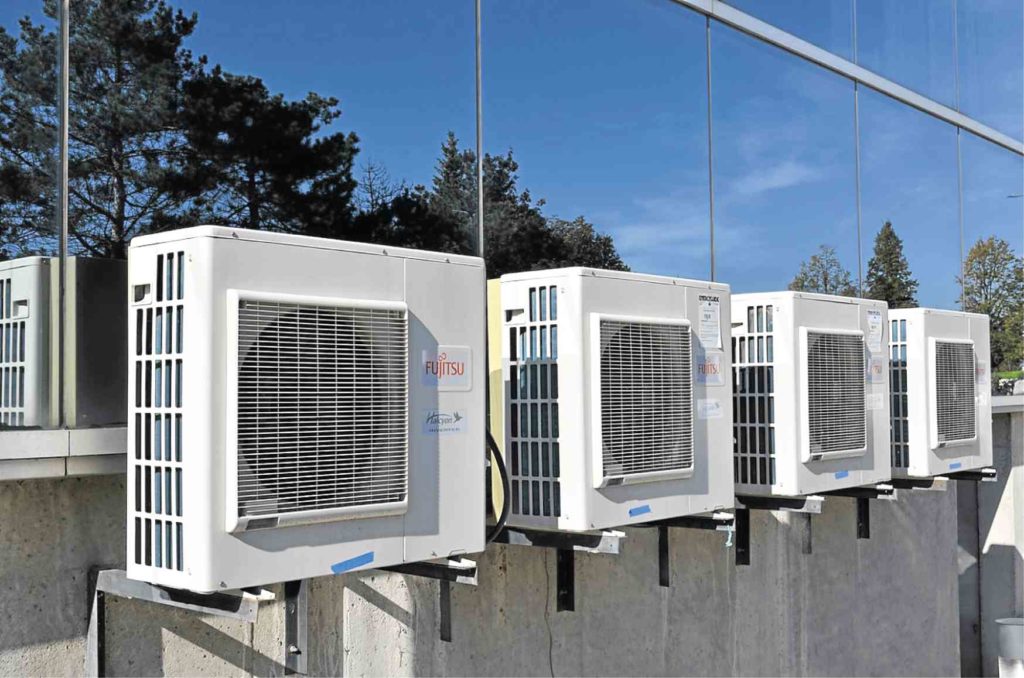Architecture before the air-conditioner

Air-conditioners were originally made for industrial use.
Do you ever wonder sometimes how life was before the air-conditioner was invented? Nowadays, as we suffer through the summer heat, many of us treat air-conditioners as our best tools for survival.
During the 19th century, however, people didn’t have the luxury of mechanical cooling. Rich and poor, young and old, everyone conjured up ways to cool down their homes during summer. From the simple to the weird, the solutions they came up with offer interesting insights in passive cooling.
Maybe it’s time we look back into the past to discover other ways we can cool off without air-conditioning.
Living underground
If we consider our oldest ancestors, early men sometimes kept their cool by living beneath the ground. Dark, damp and hidden from the sun, subterranean dwellings provided stable temperatures throughout the year.
Article continues after this advertisementBesides the cool interior climate, these structures were effective types of fortification. These early settlements inspired inclusion of basements in buildings which can still be seen today.
Article continues after this advertisementUsing the front porch
In America, many houses that survived the turn of the 19th century featured wide front porches. These places provided an escape from indoor heat and served as social spaces.
Deep roof eaves and large trees provided the needed shade. Open to the outdoors, the porch was the best place to be to catch the occasional breeze and nighttime chill. It likewise allowed people to mingle with their neighbors and enjoy the outdoors without even leaving their homes.
Enjoying high ceilings
Have you ever entered a bahay na bato? Despite its massive appearance, you must have noticed that the temperature inside one is quite cool even without fans or air-conditioners.
These structures built during the Spanish period relies on a basic principle of passive cooling: hot air rises while cold air sinks. With their high ceilings, these ancient houses allow people to enjoy the cool air on the ground while lifting the hot air beyond reach.
Beautiful latticework called callado allowed the air to circulate between rooms and to dissipate heat. These features make old stone houses relatively cool without requiring its inhabitants to even lift a finger inside their home.
Cooling off with laundry
Households before benefited from the natural cooling effect of water by line-drying their clothes in front of windows.
This strategy lowers the temperature of the incoming breeze as it passes through the wet fabric. The clothes also provided much-needed shade though temporary.
If you plan to do this nowadays, just make sure your clothes are hidden from the view of passers-by and neighbors. Clotheslines are best placed in the service area of the house, where they do not
become eyesores.
Building indoor wells
India, which suffers from some of the hottest temperatures on earth, offers a rich history of passive cooling methods.
The country introduced the use of stepwells, or man-made cisterns that were accessible to the public. Enclosed by thick walls, these structures were open to the sky above and were often accessed through elaborate staircases. Stepwells provided natural cooling around its vicinity through the evaporation of water. Besides its cooling effect, they also helped prevent water shortage as their presence ensured supply for the whole community.
Willis Haviland Carrier, the “Father of Modern Air-Conditioning,” didn’t exactly develop his invention to keep people cool.
Air-conditioners were originally developed to maintain industrial conditions inside a printing plant. The fact that the resulting machine provided personal comfort was only an accidental blessing.
Despite the existence of this modern element, it would be best to remain aware of how we can keep our homes cool naturally. By learning passive cooling techniques of the past, we can develop our homes to become naturally cool and comfortable on their own.
(Sources: www.mentalfloss.com; www.energydigital.com; www.airconditioning-systems.com; www.pixabay.com; Wknight94 via www.commons.wikimedia.org)
The author is a licensed architect who studied abroad and currently works for DSFN Architects. During summer, she often turns to hydration first before air-conditioning for much-needed relief.